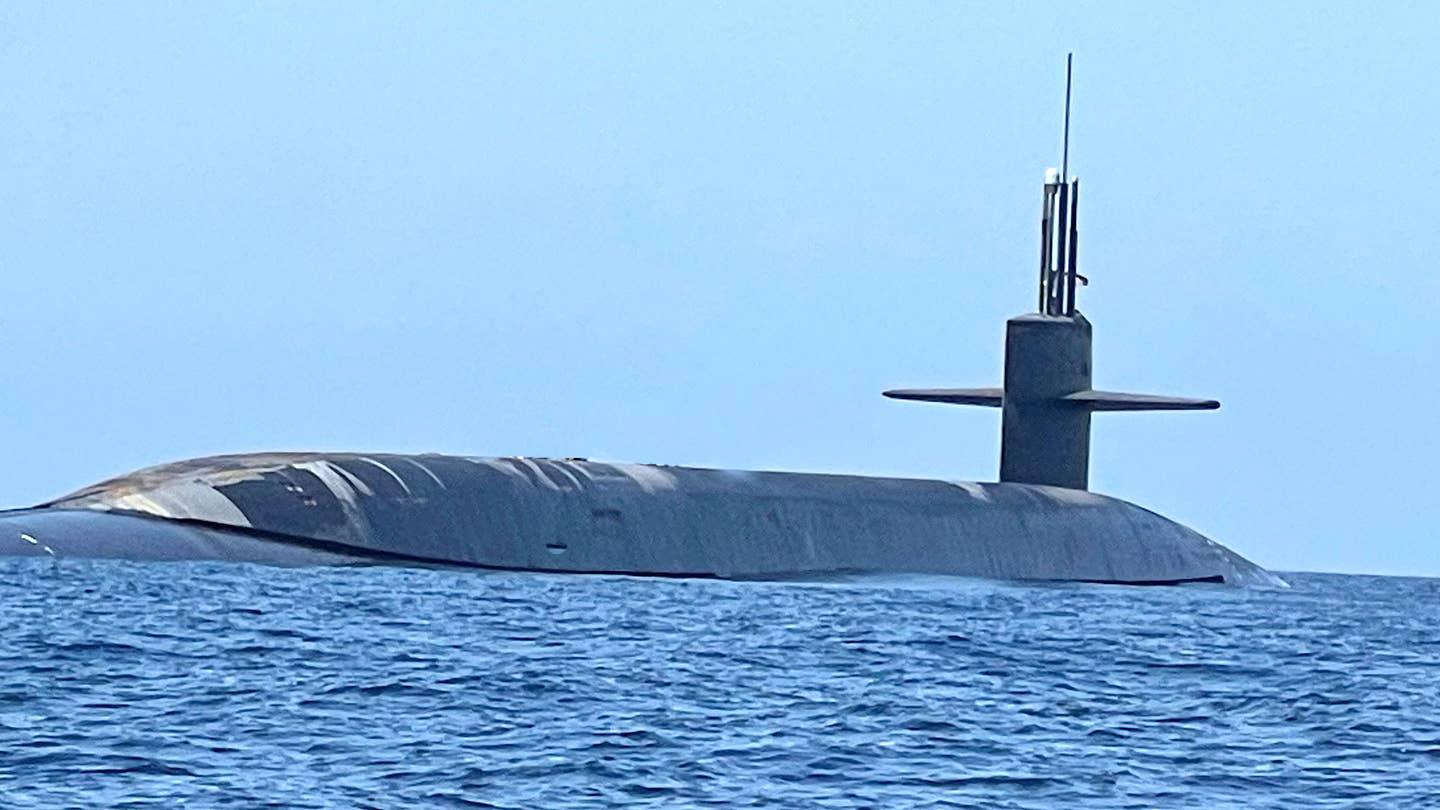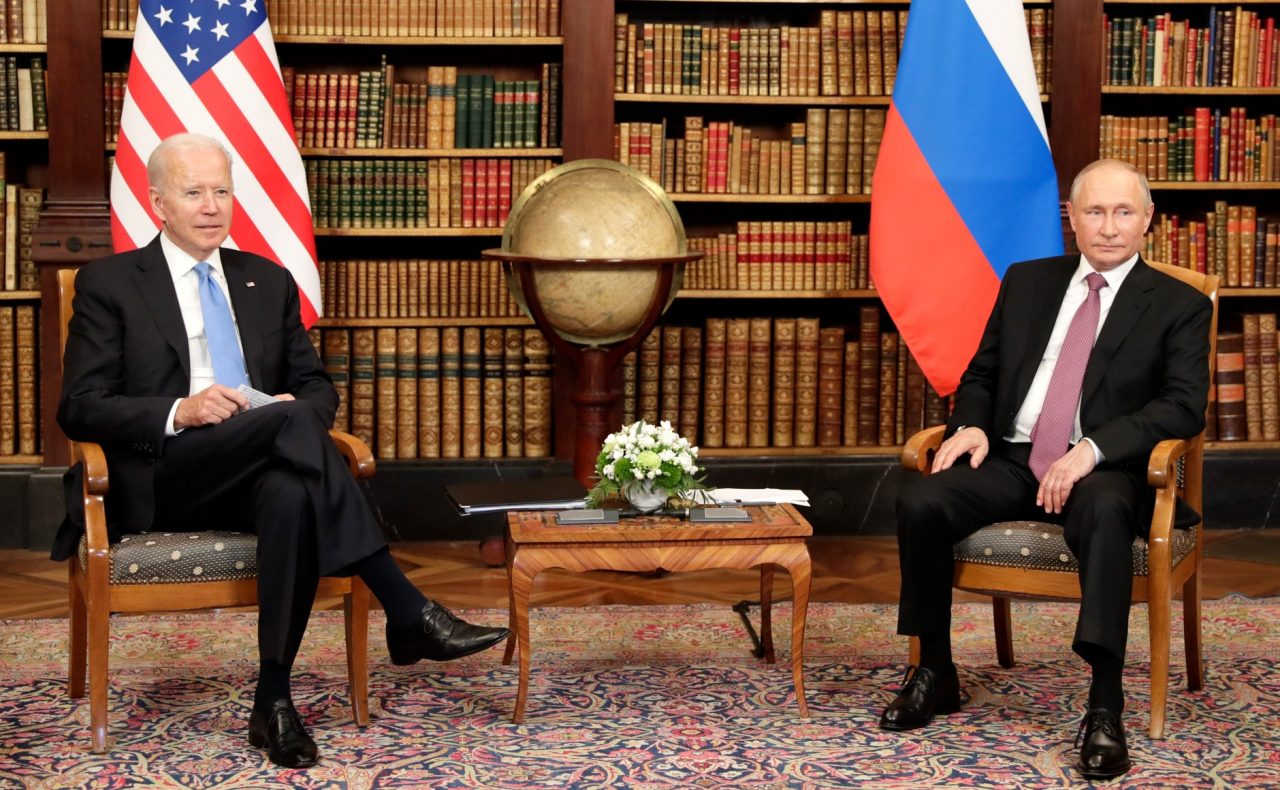All is not well in and around the Arabian Sea. While Iran tried to steal U.S. unmanned surface vessels, tensions are also brewing between the U.S. and its seasoned ally Saudi Arabia. Against this backdrop, a U.S. nuclear submarine has made a rare and startling appearance in the region.
In a highly unusual move, the U.S. Central Command revealed that an Ohio-class nuclear submarine was sailing in the Arabian Sea. The announcement was made as the top U.S. military commander for the Middle East boarded the ballistic missile submarine to assess the Navy’s capability.
General Erik Kurilla went aboard the USS West Virginia submarine for about eight hours as the submarine rose to the surface and appeared at an unknown location in the Arabian Sea.
USS West Virginia is a stealthy, nuclear-capable, long-range submarine of the Ohio class and a vital component of the U.S. nuclear triad.
Today the CENTCOM Commander embarked the USS West Virginia Ballistic Missile Submarine pic.twitter.com/fv98lYhD89
— U.S. Central Command (@CENTCOM) October 19, 2022
About 14 Ohio class ballistic missile submarines, also known as SSBNs, are currently active in the U.S. Navy. While the maximum load out for the Ohio SSBNs was 24 Trident nuclear-armed submarine-launched ballistic missiles (SLBM) earlier, it has been reduced to 20 due to arms control agreements with Russia.
General Kurilla said in a statement: “I was thoroughly impressed with the crew of the USS West Virginia; these sailors represent the highest level of professionalism, expertise, and discipline across the U.S. military.”
He added, “These submarines are the crown jewel of the nuclear triad, and West Virginia demonstrates the flexibility, survivability, readiness, and capability of USCENTCOM and USSTRATCOM [U.S. Strategic Command] forces at sea.”
It is pertinent to note that it is an extremely unlikely move on the part of the U.S. military to disclose the location of its nuclear submarines, so rare that it has only been done a few times in the past.
A nuclear-powered ballistic missile submarine normally stays underwater for 70 days after submerging. Further, nuclear-missile SSBNs normally don’t make public appearances, unlike the Los Angeles-class or Virginia-class nuclear-powered fast attack submarines that can visit ports anywhere in the world and carry conventional weapons.
When they do, it almost always happens in American waters or the ports of the United Kingdom.
Even though the US CENTCOM did not disclose the exact location, the submarine had to surface to welcome the Commander and the rest of the delegation on board, which is generally considered a risky business as it exposes the submarine.
In addition, a submarine, which is designed to operate underwater, has very restricted maneuverability once it is on the surface.

Earlier, the U.S. Navy had announced the visit of another Ohio-class SSBN, USS Alaska, to the UK Royal Navy’s base in Gibraltar in 2021. The announcement was significant in the aftermath of Russian military drills around Ukraine that had first caused fears about an impending invasion.
Therefore, the recent move to announce the SSBN’s whereabouts in the Arabian Sea could be interpreted as sending a message to American adversaries in the region.
However, it could also be aimed at disgruntled allies, like Saudi Arabia, especially in the wake of tensions between the two that has led to the U.S. President sending an unambiguous and stern warning to its most trusted ally in the Persian Gulf.
U.S. Military Signaling Amid Chaos In Arabian Sea
It is worth noting that the announcement that the CENTCOM commander had visited the nuclear ballistic missile submarine comes at a time when the U.S. is embroiled in tensions with multiple countries in the Middle East, especially one of its most bitter adversaries – Iran and its trusted and traditional ally Saudi Arabia.
On August 30, the U.S. Navy announced that Iran’s Revolutionary Guard Corps (IRGC) attempted to seize one of its uncrewed surface vessels in the Persian Gulf. At the time, the U.S. Navy had dispatched its coastal patrol ship and managed to thwart the Iranian attempt.
Further, the nuclear deal between the two still hangs in the balance, and the protests in Iran and the high-handedness of the regime have made matters worse between the two rivals.
Iran has also opened another front with the United States by siding with Russia in the ongoing Russian-Ukraine war. Iran’s transfer of the Shahed-136 kamikaze drone has become a menace for Ukraine, which is reeling under the pressure of Russian aerial bombardment. Not just that, there are reports that Iran would sell short-range ballistic missiles to Moscow.
Of late, the U.S. has been locking horns with Iran’s principal rival in the region, Saudi Arabia, which recently backed a decision by the Organization of the Petroleum Exporting Countries (OPEC) to cut oil production.
The Saudi move, which has come under immense criticism from Washington, will prove to be a boon for Russia, which is reeling under the pressure of crippling international sanctions and needs money to fund its war in Ukraine.

Further, the oil production cut will drive up oil prices for American consumers ahead of a crucial mid-term election in November. It will also cause immense trouble for European countries already under pressure with gas restrictions from Moscow.
The Saudi decision has angered politicians across the spectrum, and the ruling Democratic Party has called for fundamentally reassessing the US-Saudi partnership and for going so far as to end security cooperation with the Kingdom.
In an angry rebuttal, lawmakers even introduced two separate measures to halt arms sales to Riyadh.
On its part, Saudi Arabia has justified its decision as taken purely on economic considerations and aimed at stabilizing energy markets since the central bank has hiked interest rates and there is a looming fear of a global recession.
All these arguments have been set aside by an angry Washington, with the U.S. President warning America’s most seasoned ally of “consequences.”
Has the USS West Virginia nuclear submarine anything to do with Saudi Arabia and the Russia-Ukraine war is up for discussion?
- Contact the author at sakshi.tiwari9555@gmail.com
- Follow EurAsian Times on Google News




